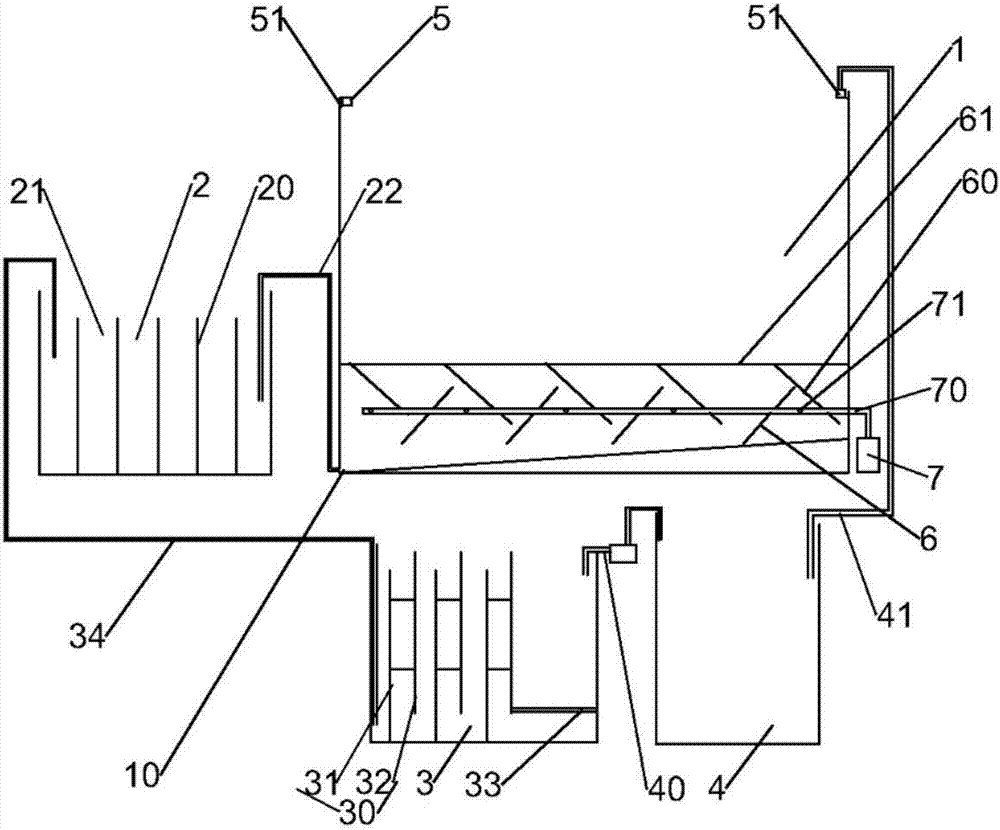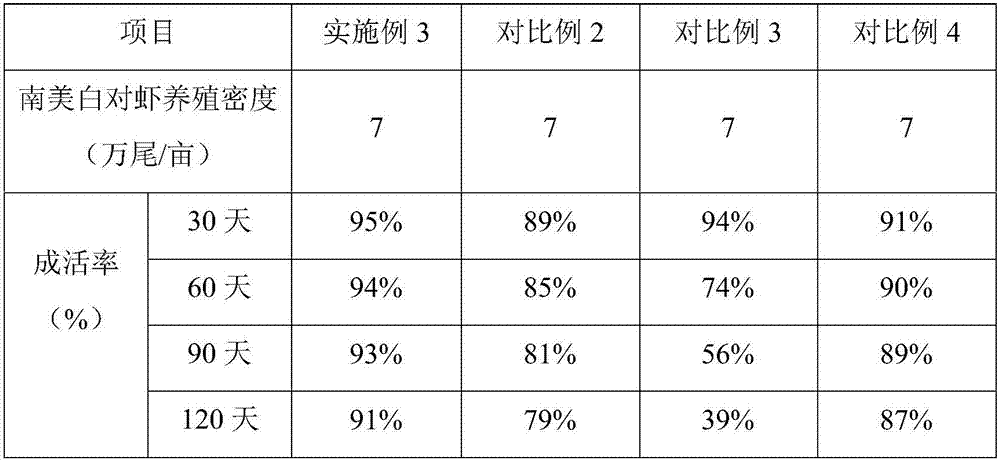Circulation breeding method of whiteleg shrimps
A technology for circulating culture of Penaeus vannamei, which is applied in the field of circulating culture of Penaeus vannamei, can solve the problems of farmers’ economic loss and the deterioration of the environment at the bottom of the breeding pond, reduce the noise pollution at the bottom of the pond, improve the pH, and slow down the impact of water flow fluctuations Effect
- Summary
- Abstract
- Description
- Claims
- Application Information
AI Technical Summary
Problems solved by technology
Method used
Image
Examples
Embodiment 1
[0034] Such as figure 1 As shown, a cyclic breeding method of Penaeus vannamei includes the following steps:
[0035] Step 1: Build a circulating breeding system, which includes: breeding tank 1, primary sedimentation tank 2, secondary sedimentation tank 3, and buffer tank 4;
[0036] Wherein, the side wall of the culture tank 1 is located at the bottom of the bottom with a residue outlet 10 at the upper end, and a plurality of partition plates 20 are clamped at equal intervals in the primary sedimentation tank 2 to divide the primary sedimentation tank 2 into multiple The sedimentation space 21, the height of the top surface of the partition plate 20 is lower than the height of the top surface of the primary sedimentation tank 2, one end of the first pipe 22 is connected with the residue outlet 10, and the other end is close to the primary sedimentation tank 2 The sedimentation space 21 at one end of the tank 1 is connected, and the first pipe 22 is provided with a first pump bod...
Embodiment 2
[0046] Such as figure 1 As shown, a cyclic breeding method of Penaeus vannamei includes the following steps:
[0047] Step 1: Build a circulating breeding system, which includes: breeding tank 1, primary sedimentation tank 2, secondary sedimentation tank 3, and buffer tank 4;
[0048] Wherein, the side wall of the culture tank 1 is located at the bottom of the bottom with a residue outlet 10 at the upper end, and a plurality of partition plates 20 are clamped at equal intervals in the primary sedimentation tank 2 to divide the primary sedimentation tank 2 into multiple The sedimentation space 21, the height of the top surface of the partition plate 20 is lower than the height of the top surface of the primary sedimentation tank 2, one end of the first pipe 22 is connected with the residue outlet 10, and the other end is close to the primary sedimentation tank 2 The sedimentation space 21 at one end of the tank 1 is connected, and the first pipe 22 is provided with a first pump bod...
Embodiment 3
[0066] Such as figure 1 As shown, a cyclic breeding method of Penaeus vannamei includes the following steps:
[0067] Step 1: Build a circulating breeding system, which includes: breeding tank 1, primary sedimentation tank 2, secondary sedimentation tank 3, and buffer tank 4;
[0068] Wherein, the side wall of the culture tank 1 is located at the bottom of the bottom with a residue outlet 10 at the upper end, and a plurality of partition plates 20 are clamped at equal intervals in the primary sedimentation tank 2 to divide the primary sedimentation tank 2 into multiple The sedimentation space 21, the height of the top surface of the partition plate 20 is lower than the height of the top surface of the primary sedimentation tank 2, one end of the first pipe 22 is connected with the residue outlet 10, and the other end is close to the primary sedimentation tank 2 The sedimentation space 21 at one end of the tank 1 is connected, and the first pipe 22 is provided with a first pump bod...
PUM
 Login to View More
Login to View More Abstract
Description
Claims
Application Information
 Login to View More
Login to View More - R&D
- Intellectual Property
- Life Sciences
- Materials
- Tech Scout
- Unparalleled Data Quality
- Higher Quality Content
- 60% Fewer Hallucinations
Browse by: Latest US Patents, China's latest patents, Technical Efficacy Thesaurus, Application Domain, Technology Topic, Popular Technical Reports.
© 2025 PatSnap. All rights reserved.Legal|Privacy policy|Modern Slavery Act Transparency Statement|Sitemap|About US| Contact US: help@patsnap.com


